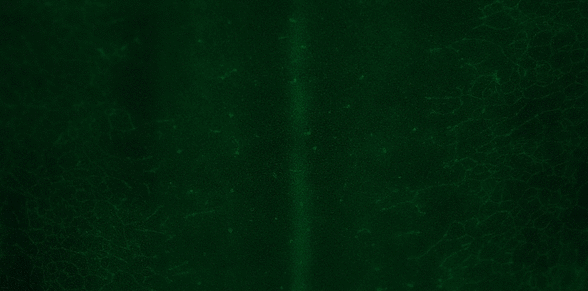Today, we show, in collaboration with the group of Prof. Denis Headon at the University of Edinburgh’s Roslin Institute (Scotland), that genetic signaling between cells and mechanical processes combine in the bird skin to form a line of propagation, along which the feather buds develop. This causes the development of a very orderly hexagonal network of feathers. We also discovered that this wave of development does not exist in those birds, such as emus and ostriches, which have lost their ability to fly. These results are reported in the journal PLOS Biology.
A wave of development
Using innovative imaging methods, the scientists have analysed the early stages of feather development in several species of birds. “In ducks and chickens, we observed feather development arising in a line along the middle of the back (the dorsal midline), with rows of new feather buds added sequentially in a spreading wave and generatinga regular hexagonal pattern,” explains Michel Milinkovitch, professor in the Department of Genetics and Evolution in the Faculty of Sciences of the University of Geneva (UNIGE).
The researchers show that the patterning of bird feathers relies not only on two coupled pathways involving signaling molecules called fibroblast growth factor (FGF) and bone morphogenetic protein (BMP), but also involves the movement of cells in the dermis (mesenchymal cells) and a third pathway — EDA/EDAR signaling. The team found that the wave-motion is driven by EDA signalling and increasing cell densities.
The case of flightless birds
Surprisingly, the biologists discovered that in ostriches and emus, the wave does not occur. “We have observed that the absence of a developmental wave causes the feathers to arrange haphazardly,” explains Athanasia Tzika, Senior Researcher in the Department of Genetics and Evolution of UNIGE and co-author of the publication. “This is probably due to the absence, for many million years, of the ability to fly, weakening the selection for a highly-ordered pattern of feathers”.
Generating cool birds
One reason for studying the early development of feathers is because depth of plumage affects birds’ heat tolerance. Most commercial breeds of chickens have too many feathers to cope with very high temperatures. This is important for agriculture in low and middle income countries, many of which have tropical climates and an increasing demand for poultry. Experts are exploring the signals involved in feather formation with a view to developing breeds that are more heat resistant.

Video: A wave of feather formation spreading across the back of a chicken embryo. Each of the green spots will grow into a feather © William Ho, Roslin Institute.
Denis Headon,
Roslin Institute, The University of Edinburgh, Scotland
https://www.research.ed.ac.uk/portal/en/persons/denis-headon(c3c7e71d-ae01-45f1-b99f-0ff41e61f373).html